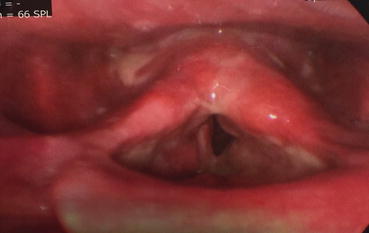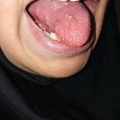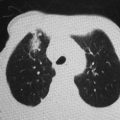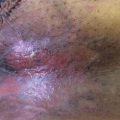, Ahmad Ameri1 and Mona Malekzadeh2
(1)
Department of Clinical Oncology, Imam Hossein Educational Hospital, Shahid Beheshti University of Medical Sciences (SBMU), Shahid Madani Street, Tehran, Iran
(2)
Department of Radiotherapy and Oncology, Shohadaye Tajrish Educational Hospital Shahid Beheshti University of Medical Sciences (SBMU), Tehran, Iran
Laryngeal edema occurs when the larynx is included in the treatment field and may impact the voice. Laryngeal edema accompanied by hoarseness is a common acute side effect in radiation therapy of laryngeal and hypopharyngeal carcinoma and whenever the neck is irradiated [1]; however, no studies have reported its incidence as an acute side effect. It has been estimated that 15–59% of patients with head and neck cancers develop grade 2 or higher laryngeal edema within 2 years after radiation therapy [2].
9.1 Mechanism
Ionizing radiation generates free radicals and produces various reactive oxygen species (ROS) that result in DNA damage and changes in the local microenvironment through the activation of cytokine cascades and influx of inflammatory cells [3, 4]. These processes cause inflammation, hyperemia, and erythema of the laryngeal mucosa.
The larynx has many mixed serous-mucinous-type glands that lubricate the larynx with thin mucus secretion and is essential to phonation. Radiation induces atrophic changes in laryngeal glands leading to changes in the quantity and quality of secretions, poor lubrication of the vocal folds, and subsequent voice problems [5, 6].
9.2 Timing
Laryngeal edema may occur during the first 2–3 weeks of radiation therapy and continue to increase to the end of treatment. Recovery begins 3 weeks after treatment completion and may require 6–12 months to subside.
9.3 Risk Factors
9.4 Symptoms
In the acute phase, laryngeal edema related to radiation causes phonation dysfunction (Fig. 9.1) that rarely is severe enough to cause serious dysphagia or compromise the airway [11]. Dryness of the laryngeal mucosa makes it sensitive to develop referral ear or throat pain.


Fig. 9.1
Laryngeal edema 7 days after full dose 3DCRT for recurrent true vocal cord SCC
9.5 Scoring
RTOG Common Toxicity Criteria for acute laryngeal side effects is based on clinical criteria and has been shown in Table 9.1 [12].
Table 9.1
RTOG common toxicity criteria for laryngeal toxicity criteria
Definition
Stay updated, free articles. Join our Telegram channel
Full access? Get Clinical Tree
 Get Clinical Tree app for offline access
Get Clinical Tree app for offline access

|
|---|



